Wai-Fah Chen.The Civil Engineering Handbook
Подождите немного. Документ загружается.

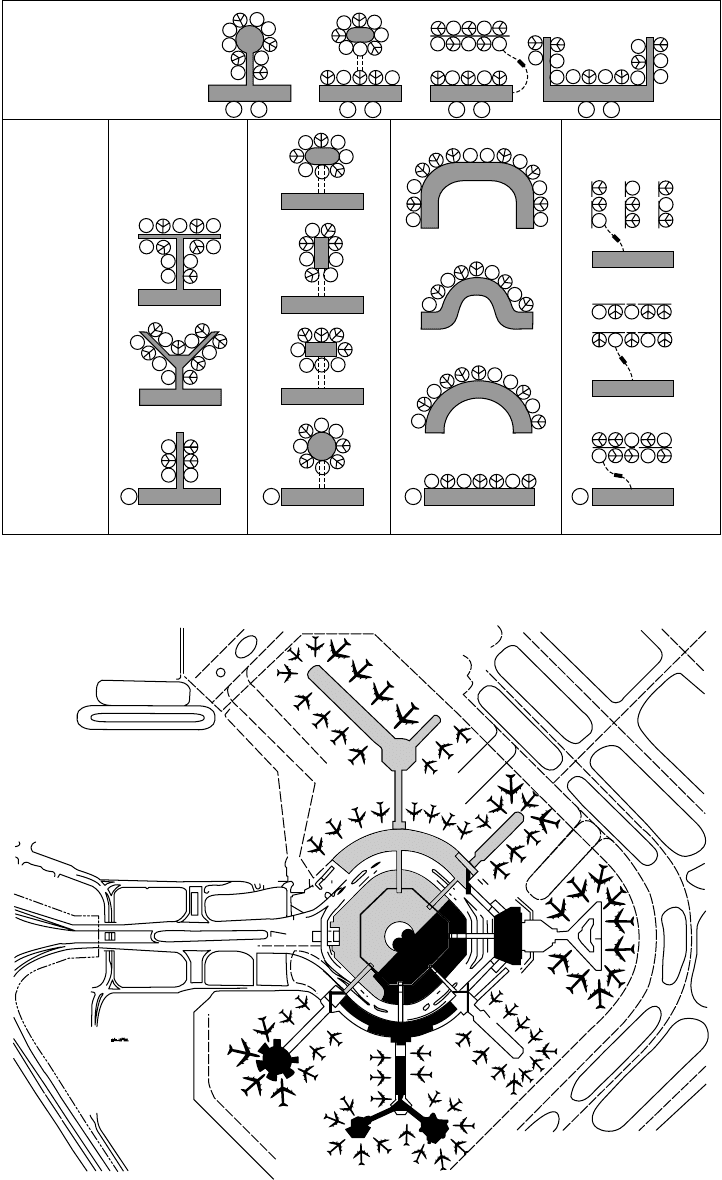
Airport Planning and Design 59-31
FIGURE 59.16 Te r minal configurations. (From FAA, Planning and Design Guidelines for Airport Terminal Facilities,
Advisory Circular AC150/5360-13, 1988b.)
FIGURE 59.17 Layout of San Francisco Airport. (From San Francisco Airports Commission, circa 1981.)
COMBINATIONS
A
A B C D
B
+
B C
+
C D
+
A C
+
V
A
R
I
A
T
I
O
N
S
PIER SATELLITE LINEAR TRANSPORTER
CT/D
B
G
NT
C
F
A
© 2003 by CRC Press LLC
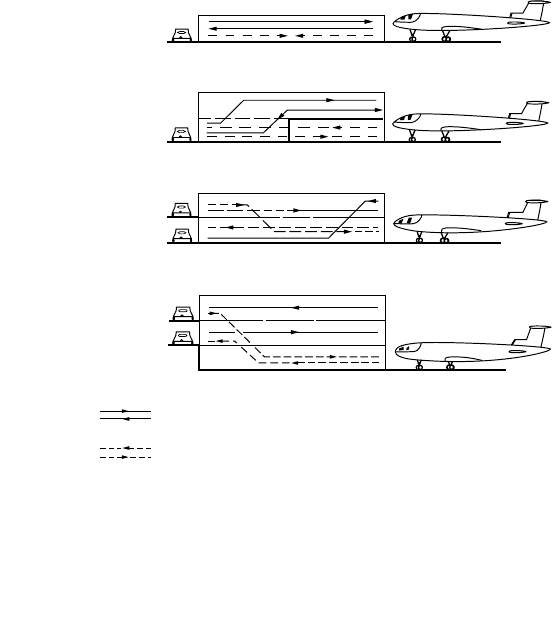
59-32 The Civil Engineering Handbook, Second Edition
For airports where annual enplanements are less than 500,000,
(59.10b)
where ENP equals annual enplanements.
One common measure used for long-range planning is to estimate that 120 to 150 square feet will be
required by each TPHP [Ashford and Wright, 1992]. (With an international component to the airport,
this number increases to about 250 square feet per TPHP. The value of 150 square feet per TPHP is
quoted by Ashford and Wright in Airport Engineering; its origin is not clear.) The current TPHP for TBA
is about 3150, suggesting a terminal size of 473,200 square feet. In the year 2000 TPHP is estimated to
be 4260, resulting in approximately 639,000 square feet. In 2020 a TPHP estimate of 6820 indicates a
terminal size of 1,023,000 square feet.
Size Estimate Using the Equivalent Aircraft Factor
The FAA advisory circular presents a full range of design curves that are useful for preliminary layout
and consideration of the adequacy of space by airport functional area, such as baggage claim. In using
the FAA references there are two major areas of information about the airport needed: (1) the number
of enplanements that are from the local community, and (2) the number and types of aircraft that will
use the airport in the peak hour, called the equivalent aircraft factor (EQA). The EQA for the TBA airport
is shown in Table 59.15. It is based on the number of seats on arriving aircraft during the peak hour.
Also shown is the departure lounge space, directly related to the EQA times the number of gates.
A terminal with a high level of hubbing results in a large number of passengers who will be changing
aircraft rather than originating from the area. Thus, hubbing airports require reduced space for airline
ticketing, baggage claim, curb access, and parking.
Table 59.16 gives a detailed breakdown of the area planning for a passenger terminal using the FAA
design curves [FAA, 1988b]. The “how determined” column indicates how each number was computed.
The estimates needed for baggage claim handling are percent arrivals (assumed during peak traffic to be
60%), the number of aircraft in the peak 20 min (assumed to be 50%), and the number of passengers
FIGURE 59.18 Ve rtical separation arrangements of passenger and baggage flows. (From FAA, Planning and Design
Guidelines for Airport Terminal Facilities, Advisory Circular AC150/5360-13, 1988b.)
One level
One & one
half levels
Two levels
Three levels
Passenger Paths
Baggage Paths
TPHP ENP=.
.
009
09
© 2003 by CRC Press LLC
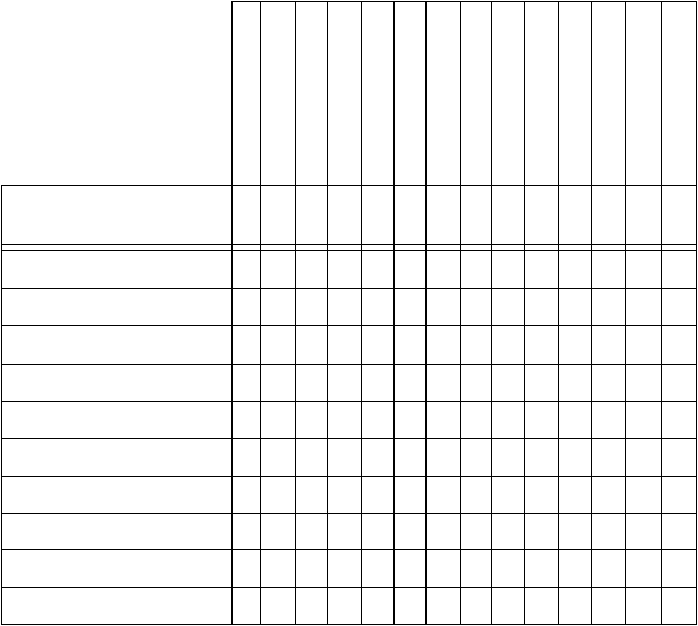
Airport Planning and Design 59-33
and guests who will be getting baggage. It is assumed that 70% of arriving destination passengers will
be getting baggage and each will have two guests. Use of FAA Advisory Circular AC150/5360-13 [1988b]
is indicated with a page number.
As shown in Table 59.17, the calculated space provides a range often useful in examining architect’s
renderings or developing preliminary cost estimates based on square-foot cost standards. The Interna-
tional Air Transport Association (IATA) has established space requirements based on the level of service
rated on a scale from excellent to poor for the major used portions of the airport. Given in Table 59.18,
these data are useful in reviewing the terminal capabilities, capacities, and plans. The middle level is
desirably the lowest level for peak operations. At the poor end, the system is at the point of breakdown.
Airport Airside Access
Parking of aircraft at the gate consists primarily of a “nose in” attitude requiring a pushback from the
gate, or parking “parallel” to the terminal building. With the modern jetways, the parking space is usually
governed by gate placement. The jetways themselves can be adjusted for aircraft door height from the
ground and usually have sufficient extension capability to serve all the aircraft. Many airlines prefer
boarding passengers on a Boeing 747 or other heavy aircraft through two doors. This requires two jetways
for each gate destined to serve the heavy aircraft or for two gates. It also means that heavy aircraft will
have special places to park at the gate. For the planning of the apron it is important to allow sufficient
space to handle the expected aircraft according to the footprint shown in Fig. 59.23. Ease of aircraft
movement to and from the taxiway dictates the space between aircraft parking areas.
FIGURE 59.19 Matrix of concepts related to airport size. (From FAA, Planning and Design Guidelines for Airport
Ter minal Facilities, Advisory Circular AC150/5360-13, 1988b.)
Airport Size by
Annual Enplaned
Passengers
FEEDER UNDER 25,000
SECONDARY 25,000 TO 75,000
75,000 TO 200,000
200,000 TO 500,000
PRIMARY OVER 75% PAX O/D
500,000 TO 1,000,000
OVER 25% PAX TRANSFER
500,000 TO 1,000,000
OVER 75% PAX O/D
1,000,000 TO 3,000,000
OVER 25% PAX TRANSFER
1,000,000 TO 3,000,000
OVER 75% PAX O/D OVER 3,000,000
OVER 25% PAX TRANSFER
OVER 3,000,000
CONCEPTS APPLICABLE
LINEAR
PIER
SATELLITE
TRANSPORTER
PHYSICAL ASPECTS OF CONCEPTS
SINGLE LEVEL CURB
MULTI LEVEL CURB
SINGLE LEVEL TERMINAL
MULTI LEVEL TERMINAL
SINGLE LEVEL CONNECTOR
MULTI LEVEL CONNECTOR
APRON LEVEL BOARDING
AIRCRAFT LEVEL BOARDING
X
X
X
XX
X
X
X
X
X
XX
XX
X
XX
X
X
X
X
X
X
X
X
X
X
X
XX
X
X
X
X
X
X
X
X
X
X
X
X
XX
X
X
X
X
X
X
X
X
X
X
X
X
X
X
X
X
X
X
X
X
X
X
X
X
X
X
X
X
X
X
© 2003 by CRC Press LLC
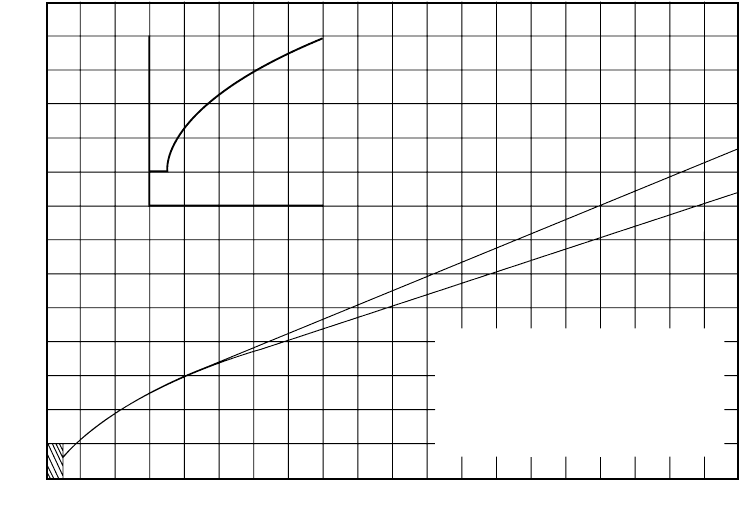
59-34 The Civil Engineering Handbook, Second Edition
The aircraft is unloaded, loaded, and serviced on the terminal apron. The spacing on the apron itself
is determined by the physical dimensions of the aircraft and the parking configuration. Figure 59.24
shows the physical dimensions appropriate for pushout parking at either a satellite or a linear gate
configuration. Apron dimensions are a function of the terminal concept chosen. However, for master
planning where detailed geometry is not available, the total area is estimated by aircraft type. Table 59.19
presents the space numbers for aircraft movement and parking [Ashford and Wright, 1992] and extends
them by the number of aircraft in the TBA example airport.
In the TBA airport example, for the 8.4 million annual enplanements in the year 2020, a total of just
under 3 million square feet of apron area is required. This space allocation includes adequate space for
aircraft to move from the apron to the taxiway, as well as space for aircraft to move freely when others
are parked at the ramp.
Airport Landside Access
Access Planning
Planning for airport access, especially by highway, is best done in conjunction with the local or state
highway departments, who will have the responsibility for maintaining efficient access and avoiding
gridlock outside the airport. The access portion of the airport design and planning process would also
take into account the potential for rail and special bus connections. The design of the roadways around
the airport and for entering and leaving the airport will need to account for the heavy traffic flows that
often occur near rush hour when local industry and airport traffic usually overlap. While these design
aspects are covered in the highway design portion of the handbook, Fig. 59.25 presents four of the more
prominent layout options for airport access.
FIGURE 59.20 Planning curve to estimate the number of gates. (From FAA, Planning and Design Guidelines for
Airport Terminal Facilities, Advisory Circular AC150/5360-13, 1988b.)
1975
10 YR. PLANNING
CAUTION:
NOT TO BE USED FOR DESIGN OR ANALYSIS.
FOR USE IN OBTAINING ORDER-OF-MAGNITUDE
ESTIMATES PRIOR TO IN-DEPTH ANALYSIS.
ESTIMATED GATE POSITIONS
6
5
4
3
2
1
ANNUAL ENPLANED PASSENGERS
(THOUSANDS)
01 00 2 00 3 00 4 00 5 00
01234567891011 12 13 14 15 16 17 18 19 20
ANNUAL ENPLANED PASSENGERS
(MILLIONS)
ESTIMATED GATE POSITIONS
0
10
20
30
40
50
60
70
80
90
100
110
© 2003 by CRC Press LLC
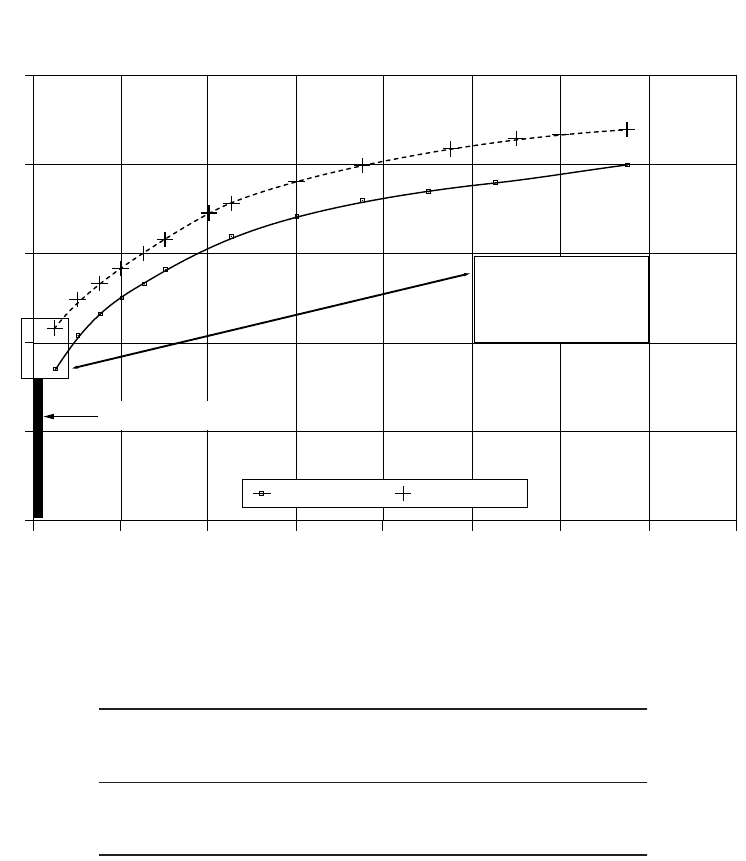
Airport Planning and Design 59-35
Terminal Curbside Dimensions
The curbside dimensions will depend on the anticipated mode of transportation that brings persons to
the airport. For gross planning, 115 lineal feet per million originating passengers can be used. For a more
accurate estimate, the “dwell time” and length of each arriving vehicle at the curb must be determined.
Since departing and arriving passengers exhibit different dwell times, it is appropriate to consider them
separately.
For example, Table 59.20 shows the average dwell times from data collected at the Fort Lauderdale–Holly-
wood airport. Table 59.21 then provides the curb length for the TBA airport in 2020, assuming that
during the peak hour 1060 TPHPs arrive at the curb and 1060 depart (see Table 59.16). The mode split
between and ridership in cars, taxis, buses, and courtesy cars would be as indicated.
Although theoretically one lineal foot of curb front can provide 3600 feet-seconds of curb front in
1 hour, it has been suggested that the practical capacity is about 70% of this number [Cherwony and
FIGURE 59.21 Using gates to estimate terminal space required. (From FAA, Planning and Design Guidelines for
Airport Terminal Facilities, Advisory Circular AC150/5360-13, 1988b.)
TABLE 59.14 Calculation of Projected Overall Terminal Area for TBA Example
Airport Using Number of Gates
Year
Annual
Enplanements
(Table 59.3)
No. of
Gates
(Fig. 59.20)
Area per
Gate (Ft
2
)
(Fig. 59.21)
Te r minal
Size Estimate
(Ft
2
)
1992 (present) 3,566,270 24 12,000 (act) 360,000
2000 4,977,100 36 16,200 583,200
2020 8,409,950 45 20,500 922,500
0
10 year planning
20 year planning
ENP 10YR 20YR
.2M
.6M
.4M
8.2
9.0
8.6
10.0
11.0
10.7
24681012 14 16
0
5
10
15
20
25
Annual Enplanements in Millions
Gross Terminal Area per Gate (000 S.F.)
GROSS TERMINAL AREA PER GATE - PLANNING
Basic Non Hub Terminals
One Gate; 4000 to 8000 S.F.
© 2003 by CRC Press LLC
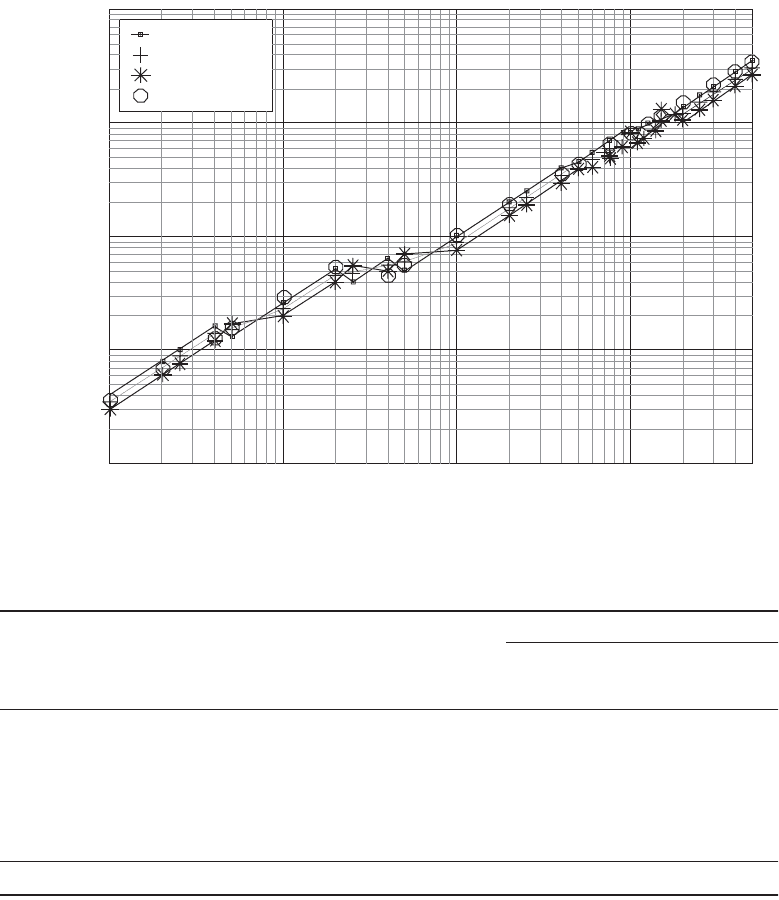
59-36 The Civil Engineering Handbook, Second Edition
Zabawski, 1983]. For the TBA airport in 2020, the curb necessary on the enplanement or departing level
is 1,877,600/(0.7 ¥ 3600), or about 745 ft, and for the deplaning curb front, 1139 ft.
Parking
Parking requirements for airports vary widely, depending on the nature of the airport and the manner
in which people come to the airport. The long-term parking serves passengers who drive and park plus
the employees on the site. The short-term lot accommodates well-wishers and greeters, visitors to the
airport itself, and salespersons, and is located next to the terminal. Separate lots for long-term and short-
term parking should be provided when the total annual passenger volume exceeds the 150,000 to 200,000
range [FAA, 1988b].
FIGURE 59.22 Typical peak hour passengers (TPHPs) as a function of enplanements using FAA relationships.
TABLE 59.15
Calculating the Equivalent Aircraft Factor
Aircraft
Type
No. of
Aircraft
Peak Hour
Seat
Range EQA
Gates
Req’d.
EQA ¥ Gates
by Type
Departure
Lounge
(Ft
2
)
Forecast for 2020
No. of
Aircraft
Peak Hour
Gates
Req’d.
EQA ¥
Gates
by Type
Departure
Lounge
(Ft
2
)
B(a) 4 <80 0.6 2 1.2 2,400 8 3 1.8 2,100
C(b) 12 81–100 1.0 10 10.0 11,000 15 13 13.0 14,300
C(c) 10 111–160 1.4 10 14.0 15,000 20 20 28.0 30,000
D(d) 2 161–210 2.0 2 4.0 4,000 4 4 8.0 8,000
D(e) 0 211–280 2.5 — — — 3 3 7.5 8,100
D(f) 0 281–420 3.5 — — — 2 2 7.0 7,400
D(g) 0 421–500 4.6 — — — — — — —
28 Total 24 34.1 31,400 52 45 65.3 69,900
Note: Req’d. = required.
Source: Computed from FAA, Planning and Design Guidelines for Airport Terminal Facilities, Advisory Circular
AC150/5360-13, 1988b.
10000 100000 1000000 10000000
ANNUAL ENPLANEMENTS
10
100
1000
10000
100000
NO HUBBING
25% HUBBING
50% HUBBING
Equation
T
Y
P
I
C
A
L
P
E
A
K
H
O
U
R
P
A
S
S
E
N
G
E
R
© 2003 by CRC Press LLC

Airport Planning and Design 59-37
High fees at the short-term lot relative to those for the long-term lot tend to discourage long-term
parkers (more than 3 hours) from clogging short-term parking areas. The short-term lot can usually be
sized on the basis of the originating peak hour passengers; one useful ratio is two short-term spaces for
every seven originating peak hour passengers [Ashford and Wright, 1992]. Another rule of thumb is that
the short-term parkers will require about 20% of the total parking space [FAA, 1988b].
The long-term lot requires a vastly different approach. The best way to develop the lot size is to obtain
data from an airport similar to the one being designed, noting the time and day a car arrives and its
length of stay. From these data a simulation can be used to size the parking lot. The Institute of Air
TABLE 59.16 Example for Terminal Space Calculation
Function How Determined 1992 2000 2020
Equivalent aircraft factor Table 59.15 34.1 52.1 65.3
Gates Table 59.15 24 36 45
TPHP Eq. (59.10a) 3150 4260 6820
1. Departure lounge Table 59.15 31,400 ft
2
51,200 ft
2
69,900 ft
2
2. Lobby and ticketing FAA 1988b, p. 56 25,000 ft
2
40,000 ft
2
45,000 ft
2
3. Airline ticket
operations
FAA 1988b, p. 65 7,200 ft
2
9,000 ft
2
11,000 ft
2
4. Airline space: crew,
office, clubs
FAA 1988b, p. 69 (5000 sq. ft. per
peak hour aircraft departure)
14,000 ft
2
21,000 ft
2
26,000 ft
2
5. Outbound baggage
room
FAA 1988b, p. 67 (80% of the bag
rooms)
17,000 ft
2
26,000 ft
2
32,000 ft
2
6. Baggage claim 60% arrivals with 50% in peak 20
min; FAA 1988b, p. 86 for baggage
claim frontage; FAA 1988b, p. 87
using T-shaped flat bed, dir. feed
for area
360 ft of claim 560 ft of claim 750 ft of claim
11,000 ft
2
16,000 ft
2
21,000 ft
2
7. Lobby waiting area FAA 1988b, p. 57 (seating for 20%
TPHP)
12,000 ft
2
16,000 ft
2
24,000 ft
2
8. Lobby for baggage
claim
Two greeters plus one passenger; a
20-min wait uses 21 ft
2
per person
(see Table 59.18)
490 PAX 662 PAX 1060 PAXmin
980 guests 1314 guests 2120 guests
30,800 ft
2
41,500 ft
2
66,800 ft
2
9. Security 150 ft
2
per station 1,200 ft
2
1500 ft
2
1800ft
2
10. Food and beverage FAA 1988b, p. 92 (assume 40–50%
usage factor)
40,000 ft
2
44,000 ft
2
52,000 ft
2
11. Concessions FAA 1988b, p. 93 (upper value) 45,000 ft
2
60,000 ft
2
80,000 ft
2
12. Other circulation Assume 80% of items 1 through 5 85,280 ft
2
130,500 ft
2
163,900 ft
2
13. HVAC, mechanical
areas, structure
Use 25% of total 80,200 ft
2
114,200 ft
2
148,400 ft
2
Total space required 401,100 ft
2
580,000 ft
2
741,800 ft
2
Space per peak hour passenger 127.3 ft
2
per TPHP 134.0 ft
2
108.8 ft
2
Note: HVAC = heating, ventilation, and air conditioning.
Source: Computed from FAA, Planning and Design Guidelines for Airport Terminal Facilities, Advisory Circular AC150/5360-
13, change 1, 1988b.
TABLE 59.17 Comparison of Sizing Methods for the TBA Airport
Year
Method of Determination
Gates (ft
2
)TPHP (ft
2
)EQA (ft
2
)Recommended (ft
2
)
1992 336,000 473,000 391,200 360,000 (act)
2000 576,000 639,000 537,700 575,000
2020 945,000 1,023,000 710,800 900,000
© 2003 by CRC Press LLC
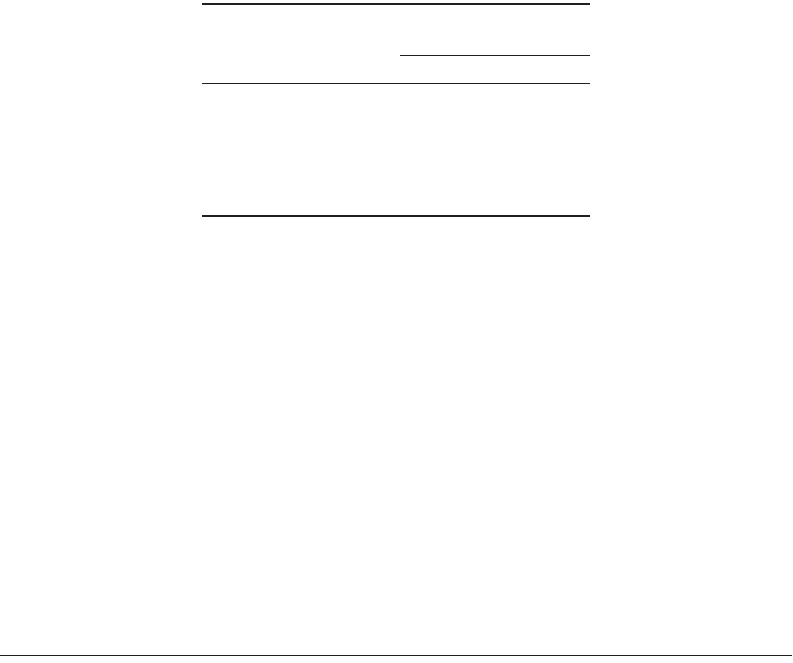
59-38 The Civil Engineering Handbook, Second Edition
Transport surveyed 12 of the larger U.S. airports in 1979 and found that the parking ranged from
3.45 spaces per million annual originating enplanements for BWI to 0.86 at New York La Guardia. While
this was a 1979 study and the parking at many airports has been upgraded, it serves to indicate the
disparity between airport parking facilities. Some cities have excellent transit connections to the airport
that serve to relieve some of the pressure for long-term parking (at least for employees).
For preliminary planning, it would be safe to use 1.5 spaces for each originating TPHP to size the total
parking need. The land needed without a parking structure equates to 100 to 125 cars per acre. For TBA
in 2020, the 6 million originating passengers would equate to 5040 TPHP, resulting in an estimate of
7500 spaces or 60 to 75 acres of parking. The short-term lot would have about 1500 spaces with about
6000 allocated for long-term parking. Often the Achilles’ heel of an airport, the parking lot is a good
revenue producer and should be carefully managed. Shuttle buses provide courtesy transportation to the
departure and arrival curbs for the convenience of the traveler.
59.7 Airport Site Determination and Considerations
It is often situations within 10 miles of the airport site that will have significant bearing on the success
of an airport project. The airspace and associated ground tracks along the takeoff and landing corridors
are critical not only to site location, but also for runway orientation, since they define:
•Where safe landing of aircraft for over 95% of the wind conditions must occur
•Where obstacles projecting into the flight path must be eliminated
•Where houses, buildings, and recreation sites could be subjected to unacceptable levels of aircraft
noise
Siting of runways must seek to provide solutions to all three of these constraints. In addition, runways
must avoid landing and takeoff paths that are over landfills and other areas that are prime bird habitats.
In recognition of the severity of aircraft crashes when they occur in the vicinity of public assembly
buildings, particularly schools, communities are encouraged to control the land use within 3 miles from
the airport reference point (ARP), restricting the building of any such buildings [FAA, 1983a]. Other site
considerations are the usual civil engineering concerns of soil condition, required grading and earthwork,
wetlands, and suitable access connecting the airport with major business and industrial areas nearby.
Mandatory Control/Ownership
The land from the outer edge of the runway protection zone (RPZ) shown in Fig. 59.26 to the runway
threshold is the minimum amount of land, beyond that associated with the runways themselves and the
terminal, that should be in the possession (under direct control) of the airport management. If ownership
TABLE 59.18 IATA Level of Service Space Standard for
Airport Passenger Terminals
Level of Service Standards
in Ft
2
per Occupant
Excellent Good Poor
Check-in queue area 19 15 11
Wait/circulate 29 20 11
Holding room 19 11 6.5
Bag claim area (no device) 21 17 13
Government inspection 15 11 6.5
Total 103 74 48
Source: International Air Transport Association, Airport
Ter minals Reference Manual, 7th ed., International Air Trans-
port Association, Montreal, 1989.
© 2003 by CRC Press LLC

Airport Planning and Design 59-39
of this area is not possible, then all activity in the trapezoidal area shown in Fig. 59.26 must be under
total control of the airport. Sometimes special easements or other legal instruments are used to ensure
positive control.
The more surrounding land the airport owns, especially land extending from the ends of major
runways, the better the airport will be able to grow and expand to meet the ever growing demand for
air travel while maintaining acceptable relationships with the community. As shown in Table 59.22, the
RPZ for paved runways (formerly called the clearway) varies in size according to the approach capability
(visual, nonprecision instrument, and precision instrument) discussed in Section 59.5.
For future expansion the best plan is to obtain land equivalent to the largest RPZ dimensions, which for
precision approaches extend 2700 feet from the runway threshold. This could result in a significant amount
FIGURE 59.23 Aircraft and ground servicing parking envelope. (From FAA, Planning and Design Guidelines for
Airport Terminal Facilities, Advisory Circular AC150/5360-13, 1988b.)
25'-10"40'-0"
101'-0"
30'-6"
6'
OPTIMUM
GROUND POWER PIT
LOCATION ALL-AIRCRAFT
(30' CABLE)
17'-0"
FUEL PIT FOR B727
THIS SIDE ONLY
(EQUIPMENT STAGING
PRIOR TO AIRCRAFT
POSITIONING).
PRE-POSITION
AREA ONLY
NOSE B747
AVG L/B POSITION 1
AVG L/B POSITION 2
OPTIMUM
FUEL PIT LOCATION
ALL-AIRCRAFT (30' RAD.)
DC10'B747 DOOR #2
B727/DC9
B727-100-200
DCB-DC-8-62
B-707 (ALL)
ALL-AIRCRAFT CENTERLINE
REQUIREMENTS DETERMINED
BY R747
DC8.62
B-727-200
++
+
+++++++
++++++
+
+
+
+
+
TERMINAL BUILDING LINE
SEE FIGURE 2-1 DIMENSION- '0'
DISTANCE RANGE
B747/DC 10/C 1011 DOOR #1
DCB.61
FIG 2-26
THIS DIMENSION DEPENDS UPON
INDIVIDUAL AIRLINE REQUIRE-
MENTS AND SPECIFIC PHYSICAL
CONSTRAINTS
25'-0"40'-0"
231'-10"
MIN. ALL-AIRCRAFT
GROUND RODS
250-260' RANGE
ALL-AIRCRAFT PARKING ENVELOPE
ALL-AIRCRAFT PARKING ENVELOPE
NOTE:
FINAL AIRCRAFT POSITION IS
A RESULT OF FUELING POINTS,
DOOR LOCATION, AND GROUND
POWER PIT LOCATION
© 2003 by CRC Press LLC

59-40 The Civil Engineering Handbook, Second Edition
of land acquisition if the airport has not planned ahead. Even though the FAA will help fund purchase of
land for safety improvements, obtaining the land around an existing airport is not always easy and can have
as much neighborhood impact as the noise paths. While it is possible to fly special curved approaches during
landing and takeoff to minimize noise, straight-in glide slopes are recommended as the safest.
FIGURE 59.24 Configurations for parking at satellite or pier. (From FAA, Planning and Design Guidelines for
Airport Terminal Facilities, Advisory Circular AC150/5360-13, 1988b.)
TABLE 59.19
Apron Requirements for Parking and Aircraft Movement TBA Airport
Type of Aircraft
Space for Aircraft Movement
and Parking (ft
2
)
Aircraft
in 2020
Apron Space
Needed (ft
2
)
Wide-bodied large-engine jet aircraft 160,000 9 1,440,000
Four-engine narrow-body jet aircraft 65,000 3 195,000
Three-engine narrow-body jet aircraft 43,000 17 731,000
Two-engine narrow-body jet aircraft 33,000 15 495,000
Two-engine turbojet aircraft 16,000 8 128,000
2,989,000
(a) Satellite push-out gate positioning
WINGTIPS SHOW 20-FT CLEARANCES
FOUR GATE TYPE A POSITIONS
AIRCRAFT PARKING LIMIT LINES
FOUR GATE TYPE B POSITIONS
FOUR GATE TYPE C POSITIONS
FOUR GATE TYPE D POSITIONS
SCALE IN FEET
050100
SATELLITE
SATELLITE
SCALE IN FEET
050100
FOUR GATE TYPE A POSITIONS
FOUR GATE TYPE B POSITIONS
FOUR GATE TYPE C POSITIONS
FOUR GATE TYPE D POSITIONS
AIRCRAFT ARKING LIMIT LINES
PIERS
ALL WINGTIPS SHOW 20-FT CLEARANCES
(b) Linear configuration push-out gate positioning
© 2003 by CRC Press LLC
